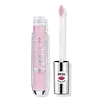What's inside
What's inside
 Key Ingredients
Key Ingredients

 Benefits
Benefits

 Concerns
Concerns

 Ingredients Side-by-side
Ingredients Side-by-side

Polybutene
Hydrogenated Polyisobutene
EmollientOctyldodecanol
EmollientSilica Dimethyl Silylate
EmollientTrimethylolpropane Triisostearate
EmollientHydrogenated Styrene/Isoprene Copolymer
Caprylic/Capric Triglyceride
MaskingMenthol
MaskingCaprylyl Glycol
EmollientBenzyl Nicotinate
Skin ConditioningSynthetic Fluorphlogopite
Octyldodecyl Stearoyl Stearate
EmollientMica
Cosmetic ColorantCI 77120
Cosmetic ColorantVp/Hexadecene Copolymer
Aroma
CI 15850
Cosmetic ColorantCI 42090
Cosmetic ColorantCI 77491
Cosmetic ColorantCI 77891
Cosmetic ColorantPentaerythrityl Tetra-Di-T-Butyl Hydroxyhydrocinnamate
AntioxidantEthyl Vanillin
MaskingPolybutene, Hydrogenated Polyisobutene, Octyldodecanol, Silica Dimethyl Silylate, Trimethylolpropane Triisostearate, Hydrogenated Styrene/Isoprene Copolymer, Caprylic/Capric Triglyceride, Menthol, Caprylyl Glycol, Benzyl Nicotinate, Synthetic Fluorphlogopite, Octyldodecyl Stearoyl Stearate, Mica, CI 77120, Vp/Hexadecene Copolymer, Aroma, CI 15850, CI 42090, CI 77491, CI 77891, Pentaerythrityl Tetra-Di-T-Butyl Hydroxyhydrocinnamate, Ethyl Vanillin
Polybutene
Ethylhexyl Palmitate
EmollientTridecyl Trimellitate
EmollientHydrogenated Polyisobutene
EmollientDiisostearyl Malate
EmollientSilica Silylate
EmollientPolyethylene
AbrasivePolyglyceryl-3 Diisostearate
EmulsifyingMenthoxypropanediol
MaskingHydrogenated Microcrystalline Cera
Ethylene/Propylene/Styrene Copolymer
Butylene/Ethylene/Styrene Copolymer
Tribehenin
EmollientPentaerythrityl Tetraisostearate
EmollientSorbitan Isostearate
EmulsifyingSilica Dimethyl Silylate
EmollientPentaerythrityl Tetra-Di-T-Butyl Hydroxyhydrocinnamate
AntioxidantButylene Glycol
HumectantCaprylyl Glycol
EmollientSodium Hyaluronate
HumectantTrihydroxystearin
Skin ConditioningPalmitoyl Tripeptide-1
Skin ConditioningHexylene Glycol
EmulsifyingSodium Chondroitin Sulfate
Skin ConditioningAtelocollagen
Skin ConditioningTocopheryl Acetate
AntioxidantPhenoxyethanol
PreservativeAroma
CI 77891
Cosmetic ColorantCI 15850
Cosmetic ColorantCI 19140
Cosmetic ColorantCI 42090
Cosmetic ColorantCI 77491
Cosmetic ColorantCI 77492
Cosmetic ColorantCI 77499
Cosmetic ColorantPolybutene, Ethylhexyl Palmitate, Tridecyl Trimellitate, Hydrogenated Polyisobutene, Diisostearyl Malate, Silica Silylate, Polyethylene, Polyglyceryl-3 Diisostearate, Menthoxypropanediol, Hydrogenated Microcrystalline Cera, Ethylene/Propylene/Styrene Copolymer, Butylene/Ethylene/Styrene Copolymer, Tribehenin, Pentaerythrityl Tetraisostearate, Sorbitan Isostearate, Silica Dimethyl Silylate, Pentaerythrityl Tetra-Di-T-Butyl Hydroxyhydrocinnamate, Butylene Glycol, Caprylyl Glycol, Sodium Hyaluronate, Trihydroxystearin, Palmitoyl Tripeptide-1, Hexylene Glycol, Sodium Chondroitin Sulfate, Atelocollagen, Tocopheryl Acetate, Phenoxyethanol, Aroma, CI 77891, CI 15850, CI 19140, CI 42090, CI 77491, CI 77492, CI 77499
 Reviews
Reviews

Ingredients Explained
These ingredients are found in both products.
Ingredients higher up in an ingredient list are typically present in a larger amount.
Aroma refers to an ingredient, or mixture of ingredients, that impart or mask a flavor.
The name is slightly confusing. This is because INCI associates aroma with flavor instead of smell.
Here is the official definition from the The International Cosmetic Ingredient Dictionary and Handbook:
“Aroma is a term for ingredient labeling used to identify that a product contains a material or combination of materials normally added to a cosmetic to produce or to mask a particular flavor.”
INCI shows the only purpose of aroma to be "flavouring".
However, due to regulation differences, some companies may use aroma in place of parfum.
In Canada, this ingredient only has to be listed in concentrations above 1%.
Learn more about AromaCaprylyl Glycol is a humectant and emollient, meaning it attracts and preserves moisture.
It is a common ingredient in many products, especially those designed to hydrate skin. The primary benefits are retaining moisture, skin softening, and promoting a healthy skin barrier.
Though Caprylyl Glycol is an alcohol derived from fatty acids, it is not the kind that can dry out skin.
This ingredient is also used as a preservative to extend the life of products. It has slight antimicrobial properties.
Learn more about Caprylyl GlycolCi 15850 is the pigment color red. It is an azo dye and created synthetically.
Azo dyes need to be thoroughly purified before use. This allows them to be more stable and longer-lasting.
This ingredient is common in foundations, lipsticks, and blushes. This color is described as brown/orangey red.
It has many secondary names such as Red 6 and Red 7. According to a manufacturer, Red 6 usually contains aluminum.
Learn more about CI 15850Ci 42090 is a synthetic dye created from petroleum. It is used to give a bright blue color to cosmetics, medicine, and food.
Ci 77491 is also hydrated iron III oxide. It's sole purpose is to give a red/pink hue to products.
Iron III oxides are classified as inorganic chemicals for coloring.
Synthetically created Ci 77491 is considered safer than those naturally found. This is because the synthetically created version may contain less impurities. Iron oxides are generally non-toxic and non-allergenic.
Learn more about CI 77491Ci 77891 is a white pigment from Titanium dioxide. It is naturally found in minerals such as rutile and ilmenite.
It's main function is to add a white color to cosmetics. It can also be mixed with other colors to create different shades.
Ci 77891 is commonly found in sunscreens due to its ability to block UV rays.
Learn more about CI 77891Hydrogenated Polyisobutene is a synthetic polymer. Polymers are compounds with high molecular weight. Hydrogenated Polyisobutene is an emollient and texture enhancer.
In one study, Hydrogenated Polyisobutene showed better skin hydration levels than Caprylic/Capric Triglyceride. As an emollient, it helps keep your skin soft and hydrated by trapping moisture in.
Hydrogenated Polyisobutene is often used as a mineral oil replacement.
Learn more about Hydrogenated PolyisobutenePentaerythrityl Tetra-Di-T-Butyl Hydroxyhydrocinnamate (long name, huh?) is a synthetic antioxidant.
It is used to help stabilize other antioxidants or prevent the color from changing in a product.
As an antioxidant, it helps fight free-radical molecules. Free-radical molecules are capable of damaging our cells and other genetic material. Thus, antioxidants may reduce the signs of aging.
This ingredient is oil-soluble.
Learn more about Pentaerythrityl Tetra-Di-T-Butyl HydroxyhydrocinnamatePolybutene is used to help control the viscosity of a product. This just means it helps adjusts the texture.
It is a polymer and does not get absorbed into the skin due to its large size.
Studies found this ingredient did not irritate skin in concentrations below 15%.
Learn more about PolybuteneThis silica is mainly used to thicken oils and suspend particles in oils. It is not water soluble.
According to the manufacturer, it:
The manufacturer also claims this ingredient to be useful in makeup.
In lipstick formulations, this ingredient improves color payoff, reduces pigment settling, and reduces oil bleeding. This ingredient also improves the grip of powder products such as dry shampoos.
Learn more about Silica Dimethyl Silylate